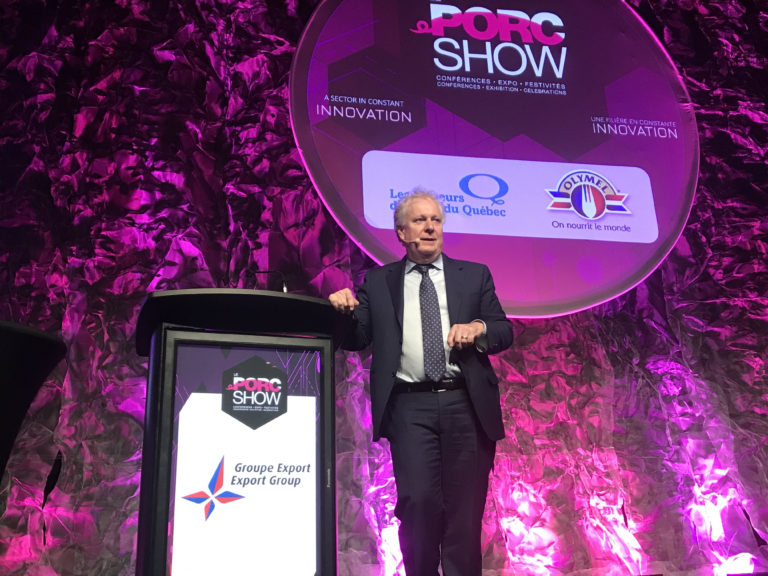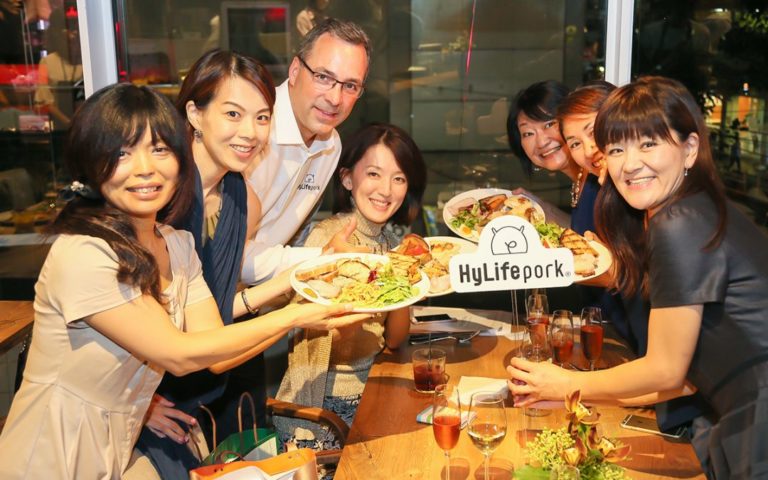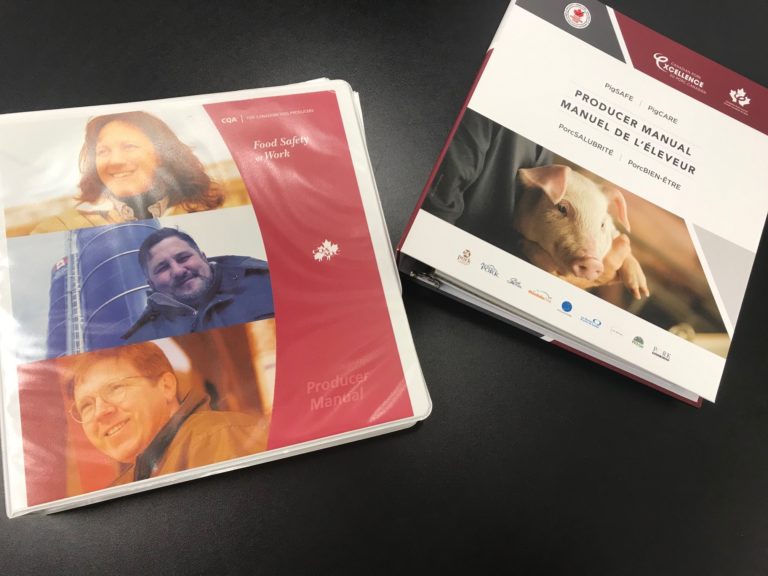Pork Commentary, February 18th, 2020
Jim Long, President-CEO, Genesus Inc.

The China Agriculture Industry and particularly the Swine Industry have been greatly affected by African Swine Fever (ASF) and now the implications of Coronavirus which has restricted people and transport movement. To say it’s a bad situation is best illustrated by the translated key points from the chairman of China Agriculture Association – MR. Xirong Li in an interview with Chinese media.
Translated Key Points from Mr. Xirongs interview:
First:
The obstruction of logistics seriously affects the production supply and the trade of live livestock and poultry.
Since the outbreak of coronavirus, major public health emergencies have been launched at the first level, resulting in the control of roads and motor vehicles. As the consequence, the transportation of pigs, young breeding stocks, eggs, poultry meat, feed, veterinary drugs, vaccines, equipment and other production and living related materials are greatly affected.
Cross province live livestock and poultry sales and transportation links are broken. Live livestock and poultry cannot be transferred between enterprises to meet normal production, and business process is interrupted.
At present, all or some cities and counties in 27 provinces have closed the live poultry market, and the live poultry in the market cannot be sold. The poultry industry has suffered heavy losses.
According to the incomplete statistics of the association, it is preliminarily estimated that as of February 12, the loss of poultry industry has reached 15.865 billion yuan (2.25 U.S. billion)
Livestock and poultry industry is a special industry with poor ability to resist market risks. Once the industry is destroyed, the recovery period will be a very slow process.
Second:
The slaughterhouse cannot be started or the operation is insufficient and affects the production and marketing of livestock and poultry.
The procedures to reopen the operations of slaughtering enterprises is complicated: the road restrictions on the flow of people, resulta in a shortage of manpower, an so the slaughterhouses cannot start operation, or the operation is insufficient which directly leads to the failure of sales for poultry, commercial pigs, cattle, sheep, rabbits and others.
Third:
The production staff is in short supply and the cost is rising.
Affected by the delay of returning employees and the extreme shortage of labor force, the enterprises cannot complete the established work plan, the production index decreases and so the cost increases.
Fourth:
Some enterprises are short of working capital and have difficulty in capital turnover.
Due to the dual threats of ASF and coronavirus, the enterprises have invested heavily in biological safety control and prevention, including the increase of inventory of various materials, thus raising the warehouse cost and plus the new outbreak of coronavirus, which seriously affects pig sales, and the lack of liquidity and difficulties in capital turnover.
Fifth:
It will affect the purchase of materials, delay the commencement time of new projects and introduction of breeding stocks.
It is difficult for enterprises to purchase materials for life and epidemic prevention, especially face masks and disinfectants.
New projects under construction in some enterprises are affected to varying degrees.
Due to the restriction of personnel flow and road traffic, many enterprises cannot introduce new genetics, which affects the follow-up commercial production.
Given above challenges, the Ministry of Agriculture and Rural Affairs, National Development and Reform Commission, and the Ministry of Transport jointly developed a policy to build the Green Corridor for the priority products including feed products, corn, soybean meal and other feed raw materials, breeding livestock and poultry, piglet and young birds, aquarium fry, livestock and poultry marketing animals, fresh milk, dairy products, fresh aquatic products, chilled and fresh pork, transferal bees, etc.
We believe Brett Stuart of Global AgriTrends has as good a handle on China’s Swine Industry as anyone anywhere. Here are some comments published in the Western producer by columnist Karen Briere from Brett’s recent talk in Saskatoon Canada:
“Disease is a global market game-changer.”
“The hog market seems to be having a hard time believing what is happening in China”, Stuart said. He called it “irrational.”
The country officially says 40 percent of its sow herd is gone but he estimates it at closer to 65 percent.
“In context, North America has about 6.5 million sows and China just lost 24 million.”
“I look at U.S. hog futures and no one will believe it. We’re not even making money on hogs. They’re pretty suspicious of this, especially the investors.”
“It’s just not there,” Stuart said. “By my math, I say China is going to have about a 24.5 million tonne gap in protein in 2020.”
“Current global pork trade is about eight million tonnes.”
Stuart said “there is nothing that can be produced in the volume China requires to fill the gap. Chinese pork prices are going to stay very high for a long time as a result.”
He added that “China’s claims that it can restore normal pork supply by 2021 is simply propaganda; there aren’t 20 million sows on the global market.”
Topigs Norsvin Appoints New CEO
In the world of Swine Genetics, we pay attention.
Topigs Norsvin after a several month search has appointed Villaume Kal as its new CEO. Mr. Kal replaces Martin Bijl who left in 2019 to join a company selling Grass Seed.
Mr. Kal is the former CEO of Rousselot, part of Darling Ingredients. Darling Company is where we used to take our deadstock for rendering.
Kind of find it funny, maybe even poetic that a deadstock company is training ground for a swine genetics company CEO. Strange but interesting world.

Genesus Customer Testimonials
Newport South, MN, USA
| “The Genesus Duroc sired pig hits the ground running, the pig finds milk and never slows down. Very easy starting pig, transitions well to pellets and then to grind and mix. They never slow down even in our barn where we move them five times. The pigs never skip a beat and have a very low mortality rate from wean to finish. The Duroc pig can withstand everyday health challenges and is very uniform and finishes in a tight group. This pig has a huge appetite, and it shows to be beneficial through health challenges. This all starts in the farrowing room thanks to the Genesus F1, she has a big appetite, milks all her pigs and gets them off to the right start.” |
Ferme Durand, MB, Canada

“We are very proud to be associated with Genesus whether it be with the executive or selection team. All are precisely important to our relationship. Pig performance and temperament are second to none – making our care for animals a great joy.”






























Genesus Global Market Report USA, February 2020
Allan Bentley, Sales, Genesus Genetics
abentley@genesus.com
“Capitalize on confusion”
The pork show season is almost over and we get to visit with a lot of people in the pork industry during this time.
I am going to piggy back off Jim Long’s comments in his commentary about questioning the need for lean hog futures. I don’t know of any comment Jim has made that provoked so much discussion at a pork show.
I believe Jim is correct, algorithm and day traders are capitalizing on the confusion and mixed messages coming out of Washington D.C. and China. Dr. Joe Carr explained it to me as if the fundamentals have become the boundary lines of the football field, and although that may define the basic rules, the traders can run all over that football field in any direction they want.
There is absolutely no fundamental reason hog futures are where they are right now, maybe because traders are controlling the market? I have been quite involved with bankers from Missouri to Minnesota and they too are very disappointed in the lack of response from hog futures.
The fact that 25% of the hog population is gone should be affecting the market in a positive way for producers. Bankers used to use an inelastic number for hog prices of 4, meaning for every 1 percent change in the supply, the price should react the opposite by 4%. I do not need a calculator to tell you that 25% fewer hogs should mean much higher prices then we are seeing today.
Bankers nor market analysts can’t explain why this is happening. They are as confused as anyone in the pork industry. Maybe the Democrats should investigate the trading practices in Chicago instead of President Trump. A very smart man once told me to “capitalize on confusion.” I am thinking he must have worked in Chicago!
PEDv is starting to pop up sporadically in herds and PRRS is always a problem but these issues probably won’t affect the markets either. The bottom line is that there is a huge gap of pigs in China and they need to replace that loss.
When will the market be a true barometer for supply versus demand and not what traders think pork is worth? Again, traders seem to be able to “capitalize on confusion” and the producers are suffering from their manipulation of the Chicago Board of Trade.
Genesus Customer Testimonials
Country View Farms, NE, USA
“The hardiness of the Genesus females continues to mpress us. We broke with PRRS in January 2019,but it was amaing to see the Genesus animals desire to live ad get through it. The gilts we purchased from Genesus have been great”
Hutterville Farming, AB, Canada
“Little over halfway through the conversion to Genesus animals; and so far we are seeing huge difference in live born (over 1.5pigs extra). Genesus sows areweaning nice even litters easy to manage and good geed intake in lactation. Overall nicely satisfied for now. Salesman 5 stars.”